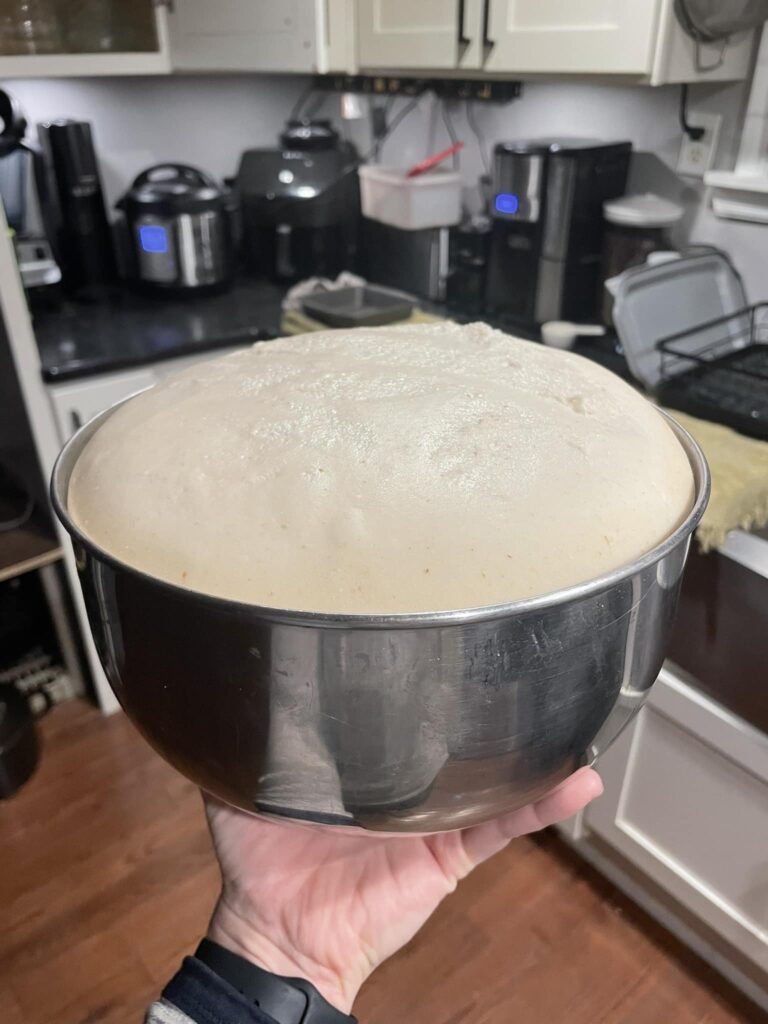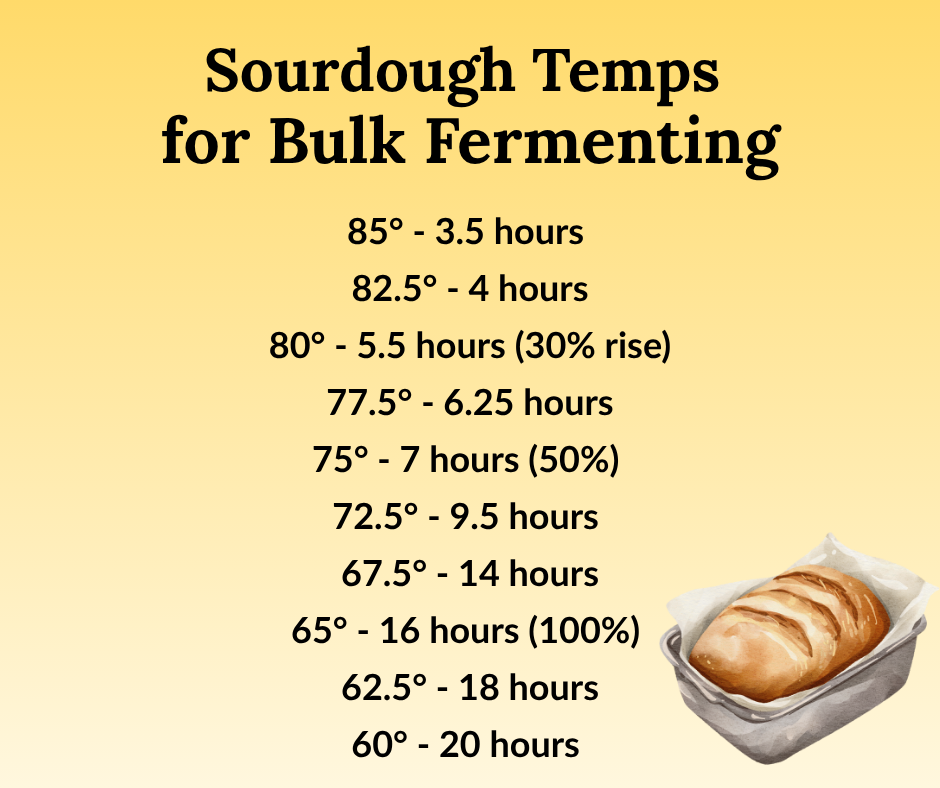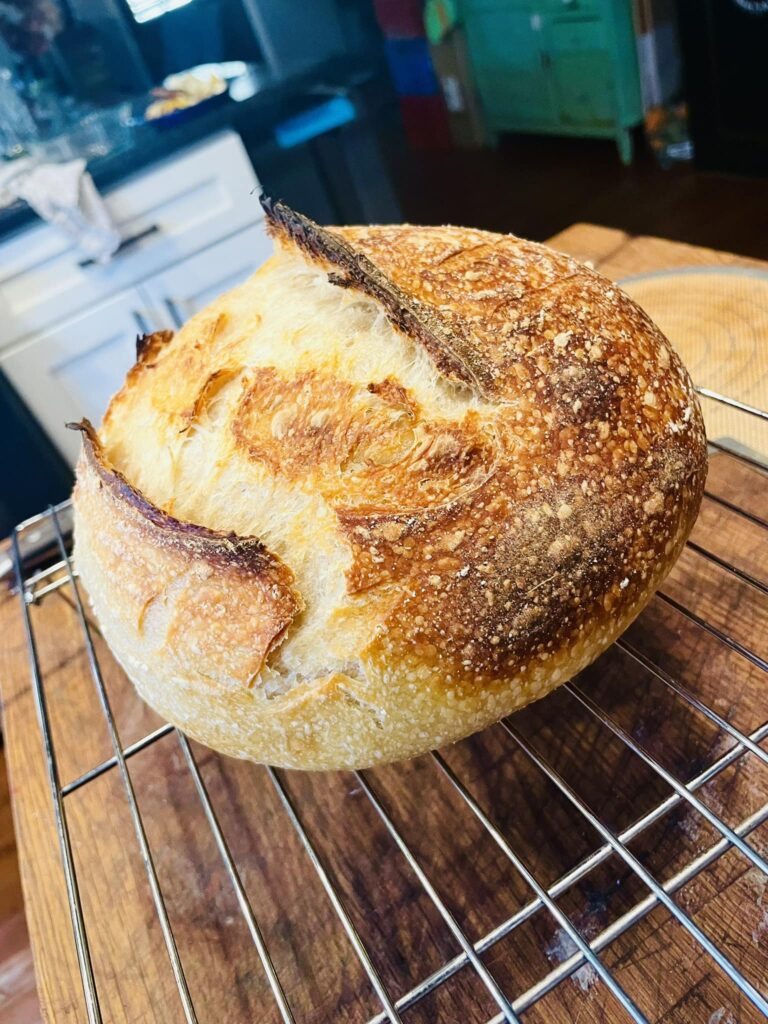Bulk Fermentation and How to Know When to Shape Sourdough
Whether you’re at the beginning of your sourdough journey or you’ve been trying for a while, learning about bulk fermentation and how to know when to shape sourdough is KEY.
Taking the temperature of your sourdough during bulk fermentation is one of the most reliable ways to ensure consistent, predictable results. Dough temperature directly impacts fermentation speed—too cool, and your dough will move sluggishly, developing less strength and flavor; too warm, and it can race ahead, risking overproofing and a weaker structure. Monitoring the dough’s temperature helps you understand how your starter, flour, and environment are interacting, so you can make adjustments to timing or water temperature before issues arise. It’s one of those small steps that can make a big difference in the quality and consistency of your bread.
By temping your dough throughout bulk ferment, you’re essentially learning your dough’s “language.” A dough that stays within an optimal temperature range (typically around 75–82°F / 24–28°C) will ferment evenly, build strength naturally, and develop balanced flavor. This attention to temperature helps you time your folds, know when bulk fermentation is complete, and achieve that beautiful open crumb and airy texture every baker wants. It’s a simple practice, but it turns sourdough baking from guesswork into a more intuitive, repeatable craft.
BUT you can definitely work with sourdough dough that’s 65-74 degrees! We’ll talk about how to do that in this blog post as we learn about Bulk Fermentation and How to Know When to Shape Sourdough.

Working with Cold-er Dough: Bulk Fermentation and How to Know When to Shape Sourdough
Working with sourdough dough in the 65–74°F range is absolutely doable—you just need to understand how temperature affects timing. Cooler doughs (closer to 65°F) will ferment more slowly, allowing for a longer, gentler flavor development. The gluten strengthens gradually, and you’ll notice that it takes more time between stretches and folds for the dough to feel airy and elastic. Rather than rushing it, you can embrace the slower pace and use visual and tactile cues—like volume increase and bubble formation—to guide your process instead of the clock.
At slightly warmer temps (around 72–74°F), fermentation will move faster, so your timing will naturally shorten. The key is to observe your dough and adjust as you go. The beauty of sourdough is its flexibility—once you understand how temperature shifts the timeline, you can make great bread in almost any kitchen environment by simply adjusting your expectations and paying attention to your dough’s behavior.

Cold Retard after Bulk Fermentation
The temperature and humidity of your home play a big role in how your sourdough behaves during bulk fermentation. Warmer, more humid environments speed up fermentation, meaning your dough may double in volume faster than expected. In contrast, cooler, drier spaces slow everything down, giving you a longer window to build structure and flavor. Even a few degrees can make a noticeable difference—what takes four hours in summer might take six or more in winter. Monitoring your dough’s internal temperature helps you stay consistent despite these fluctuations, ensuring that your fermentation is driven by the dough’s actual condition, not just the room around it.
Humidity also affects how your dough feels and responds. In very dry air, dough can lose surface moisture quickly, leading to a tougher skin that makes folding and shaping more difficult. In high humidity, the dough may feel stickier and require a touch more flour for handling. Paying attention to these details—and adjusting your bulk ferment time or technique as needed—helps you maintain control over your process and achieve consistent results, no matter the season.
After bulk fermentation, we like to cold retard our dough for at least 24 hours in the refrigerator. This extended, slow fermentation deepens the flavor, enhances the crust color, and helps the dough develop more complexity and a balanced tang. Even in the cold environment of a fridge, fermentation continues at a very gentle pace, allowing the yeast and bacteria to keep working in harmony. This step also makes the dough easier to handle and score before baking—an extra bonus for both flavor and form.
As you continue to learn Bulk Fermentation and How to Know When to Shape Sourdough – you’ll find that your loaves are much more consistent!

Want to learn more?
Follow us on YouTube and Facebook to learn more about sourdough and running a micro bakery!
